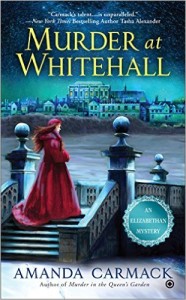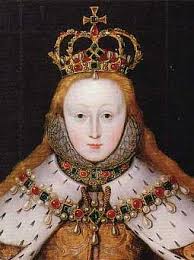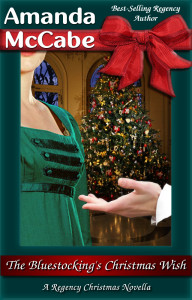Happy December, Risky readers! It’s been a busy month around here, with family visits and some lovely concerts (like Elena, there are aspects of Christmas that always make me feel a bit melancholy, but music is one of my favorite things about the season). I have also had a flurry of new releases. The latest is the 4th in my Elizabethan Mystery series, Murder at Whitehall (which takes place, of course, at Christmastime 1560).
So, how did the Elizabethans celebrate Christmas?
 One thing I learned as I researched Murder at Whitehall is that the Elizabethans really, really knew how to party at the holidays! The Christmas season (Christmastide) ran 12 days, from December 24 (Christmas Eve) to January 6 (Twelfth Day), and each day was filled with feasting, gift-giving (it was a huge status thing at Court to see what gift the Queen gave you, and to seek favor by what you gave her), pageants, masquerades, dancing, a St. Stephen’s Day fox-hunt, and lots of general silliness. (One of the games was called Snapdragon, and involved a bowl of raisins covered in brandy and set alight. The players had to snatch the raisins from the flames and eat them without being burned. I think the brandy was heavily imbibed before this games as well, and I can guarantee this won’t be something we’re trying at my house this year!)
One thing I learned as I researched Murder at Whitehall is that the Elizabethans really, really knew how to party at the holidays! The Christmas season (Christmastide) ran 12 days, from December 24 (Christmas Eve) to January 6 (Twelfth Day), and each day was filled with feasting, gift-giving (it was a huge status thing at Court to see what gift the Queen gave you, and to seek favor by what you gave her), pageants, masquerades, dancing, a St. Stephen’s Day fox-hunt, and lots of general silliness. (One of the games was called Snapdragon, and involved a bowl of raisins covered in brandy and set alight. The players had to snatch the raisins from the flames and eat them without being burned. I think the brandy was heavily imbibed before this games as well, and I can guarantee this won’t be something we’re trying at my house this year!)
Later in Queen Elizabeth’s reign, she mostly kept Christmas at Greenwich, or sometimes at Hampton Court or Nonsuch Palace, but in the year my story is set, 1559, she spent the holiday at Whitehall in London. Elizabeth had only been queen for a year, so hers was a young Court full of high spirits. This was also one of the coldest winters in memory, so there would have been a lot of sledding and ice skating . It was fun to imagine this scene, and put my characters, Kate and her friends (including the real-life Lady Catherine Grey and her suitor Lord Hertford) into the action!
Even though there were no Christmas trees or stockings hung by the fire, I was surprised to find we would recognize many of the traditional decorations of the time. Anything that was still green in December would be used–holly, ivy, yew, bay. The Yule log was lit on Christmas Eve using a bit of last year’s log saved for the purpose. It was brought in by the men of the household, decorated with wreaths and ribbons, and set ablaze so everyone could gather around and tell tales of Christmases past. Music, as it is now, was one of the big mood-setters of the season, and since Kate is the queen’s favorite musician I listened to many CDs of period music and imagined what she might play every day.
 Food was also just as big a part of the holiday as it is now! Roast meats were favorites (pork, beef, chicken, fricaseed, cooked in broths, roasted, baked into pies), along with stewed vegetables and fine whit manchet bread with fresh butter and cheese. Elizabeth was a light eater, especially compared with her father, but she was a great lover of sweets. These could include candied flowers, hard candies in syrup (called suckets, eaten with special sucket spoons), Portugese figs, Spanish oranges, tarts, gingerbread, and figgy pudding. The feast often ended with a spectacular piece of sugar art called (incongrously) subtleties. In 1564, this was a recreation of Whitehall itself in candy, complete with a sugar Thames. (At least they could work off the feasting in skating and sledding…)
Food was also just as big a part of the holiday as it is now! Roast meats were favorites (pork, beef, chicken, fricaseed, cooked in broths, roasted, baked into pies), along with stewed vegetables and fine whit manchet bread with fresh butter and cheese. Elizabeth was a light eater, especially compared with her father, but she was a great lover of sweets. These could include candied flowers, hard candies in syrup (called suckets, eaten with special sucket spoons), Portugese figs, Spanish oranges, tarts, gingerbread, and figgy pudding. The feast often ended with a spectacular piece of sugar art called (incongrously) subtleties. In 1564, this was a recreation of Whitehall itself in candy, complete with a sugar Thames. (At least they could work off the feasting in skating and sledding…)
A couple fun reads on Christmas in this period are Maria Hubert’s “Christmas in Shakespeare’s England” and Hugh Douglas’s “A Right Royal Christmas,” as well as Alison Sim’s Food and Feast in Tudor England and Liza Picard’s “Elizabeth’s London.” Be sure and visit my website,http://amandacarmack.com, for more Behind the Scenes history on Kate and her world, and a few Christmas traditions and recipes. (Anyone going to try and cook the roasted peacock??) If you’d like to give Murder at Whitehall a read, or see an excerpt, you can find it right here….
 And And–if you are more of a Regency fan (I told you I had a flurry of new things out!), I have a little Christmas novella, The Bluestocking’s Christmas Wish! If you’re like me, you don’t have a lot of time for deep reading this time of year, and I’ve always found a Regency Christmas novella fills the slot nicely.
And And–if you are more of a Regency fan (I told you I had a flurry of new things out!), I have a little Christmas novella, The Bluestocking’s Christmas Wish! If you’re like me, you don’t have a lot of time for deep reading this time of year, and I’ve always found a Regency Christmas novella fills the slot nicely.
What are some of your favorite holiday reads???

